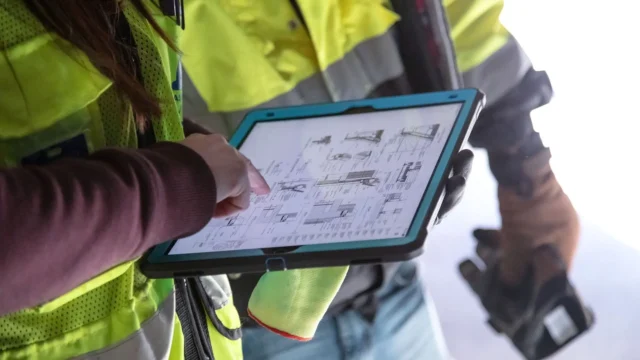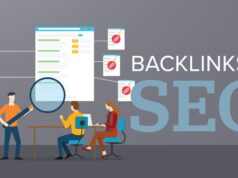
The construction industry is an ever-evolving landscape, and staying on top of the latest trends and technologies can be a challenge. That’s why we’ve created The Ultimate Guide to Commercial Construction Software – to provide you with all the information you need to make informed decisions about how best to manage your projects.
From a detailed analysis of popular platforms, features & functionalities, pricing structures, customer reviews and more – this guide will help you understand exactly what each software solution has to offer so that you can choose the most suitable option for your business.
So if you’re ready to take control of your commercial construction operations, then let’s get started!
The Benefits of Using Commercial Construction Software

Using a commercial construction software glossary is a great way to stay competitive in the industry and maximize efficiency. It can provide many benefits such as increased accuracy, better safety protocols, more efficient scheduling, improved communication and collaboration between team members, and decreased costs.
Accuracy is key when it comes to any project, especially ones involving large sums of money or complex tasks. By utilizing specialized commercial construction software programs, users can reduce errors that may arise from manual calculations.
This not only saves time but also increases confidence in the results produced by the program. Safety should always be a priority number one on any job site. With the help of these programs, users can ensure that safety protocols are being followed across multiple job sites through detailed checklists and reports which can be quickly accessed by all involved parties at any given time.
Additionally, this type of software allows for real-time tracking so that personnel on-site have access to important data like weather forecasts or warnings about hazardous materials without having to physically travel from location-to-location.
Efficient scheduling plays a major role during building projects as well and with automated capabilities provided by commercial construction software teams can now easily create timelines based on predetermined criteria while also allowing them to stay organized and up-to-date throughout their project lifecycle.
Communication between team members has become easier thanks to features such as instant messaging notifications inside the most popular platforms allowing everyone who’s involved in a specific project to maintain constant awareness regarding its status no matter where they might be located geographically speaking at any given moment during its duration.
Furthermore, this same technology enables remote workers to collaborate just like traditional office employees do, thus providing flexibility for businesses interested in expanding their operations outside their home countries .
Finally, using these kinds of specialized software helps companies save considerable amounts in terms of budgeting since accurate estimates related directly correlated with material acquisition expenses along with other related items will almost guarantee cost reductions over the period due to timely decisions taken early enough depending upon information gathered via the application itself.
Types of Commercial Construction Software

When it comes to commercial construction software, there are many types available for businesses today. From cloud-based solutions to mobile apps and desktop programs, the right type of software can make a big difference in any project’s success. Project management tools are essential for staying on top of deadlines, budgets, and tasks while managing projects from start to finish.
These applications allow users to create plans, assign roles and responsibilities, monitor progress in real time and store important files securely. Estimating systems help contractors quickly determine the cost of completing a job by giving them access to up-to-date prices on labor and materials as well as an easy way to calculate costs before submitting bids or quotes.
CAD (Computer Aided Design) software helps architects develop design concepts with accuracy by allowing them to work with 3D models instead of just drawings or blueprints.
This makes it easier for designers to communicate their ideas more efficiently with clients and other stakeholders involved in a project. Risk analysis tools help identify potential problems that could arise during construction projects so that preventive measures can be taken ahead of time rather than having costly surprises later down the line when mistakes could have been avoided if they were addressed earlier on.
Finally, document management systems provide an efficient way for sharing documents among teams working remotely or collaborating across different locations without wasting time sending emails back and forth between parties involved – making sure everyone is always kept up-to-date on important changes or updates pertaining to each project easily accessible via one central platform at all times!
How to Choose the Best Commercial Construction Software for Your Project

Choosing the right commercial construction software for your project is essential to ensure its success. With so many options on the market, it can be difficult to decide which one is best-suited for you and your teams needs.
This guide will provide an overview of key factors to consider when selecting a program as well as helpful tips and tricks to aid you in making the most informed decision possible.
First, identify what features are necessary for your project and make sure that any potential software offers those features.
Consider how easy it is to use, if there are any additional services or support available, compatibility with other programs and systems already in place, scalability depending on project size or complexity, cost efficiency compared with other similar products and whether customization options exist should they become necessary down the road.
Next look into customer reviews from previous users of each program – this can help indicate satisfaction levels among customers who have used them before. Additionally do research online through forums or blogs related to commercial construction software; here you may find valuable insight from people who have experienced firsthand their pros and cons when using certain types of programs.

Finally reach out directly with vendors by asking questions about their product offerings; this way you can get a better sense of how they respond as a business partner should there be any issues that arise during implementation or usage later on down the line.
By following these steps closely, youll be able to quickly narrow down your list until only one choice remains: The perfect commercial construction software solution tailored specifically for your project!































